13 December 2024 : Daily Current Affairs
1. Beijing’s war against air pollution
- 1. Beijing’s war against air pollution
- 2. Simultaneous Elections in India: Roadmap, Challenges, and Feasibility
- Prelims Facts
- 1. Gukesh is youngest world chess champion
- 2. What is Disease X and why the world should prepare for it
- 3. Sweetened drinks ‘increase risk of cardiovascular diseases’
- 4. Pollution kills 1.5 million a year, no Indian lives in WHO standard air, says study
- 5. eCOURTS MISSION MODE PROJECT
(Source – The Hindu, International Edition – Page No. – 10)
| Context |
|
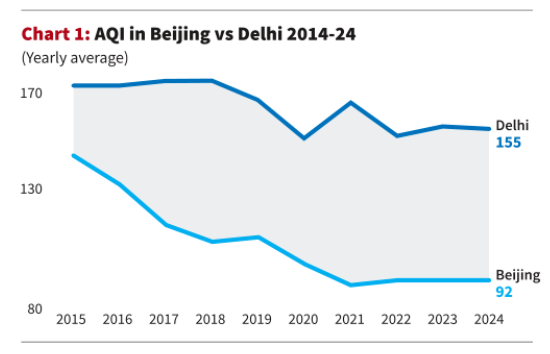
Comparison Between Beijing and Delhi: Air Pollution Context
- In 2015, Beijing’s air quality index (AQI) averaged 144, comparable to Delhi’s current average of 155 for 2024.
- Beijing managed to reduce its pollution levels by one-third, particularly between 2013-2017.
- The success of Beijing’s pollution control program offers valuable insights for Delhi, a city with similar developmental challenges.
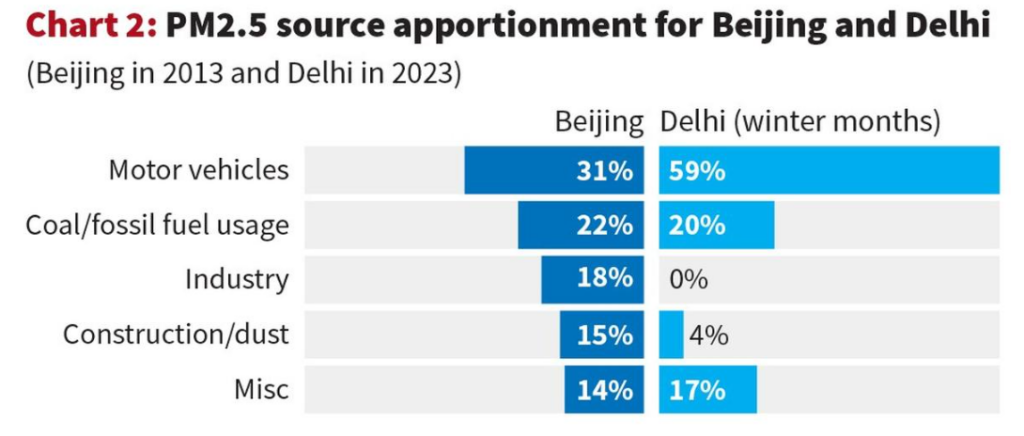
Pollution Sources in Beijing and Delhi
- Beijing and Delhi share common pollution sources, particularly during the winter months.
- The regional contribution to pollution from neighboring areas plays a significant role in both cities.
- Local emissions, though important, can only be controlled effectively with a collective effort, as shown by Beijing’s experience.
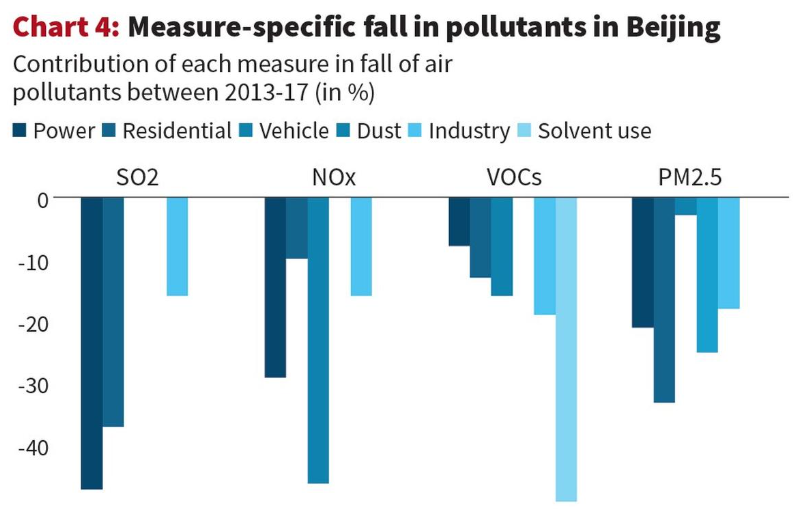
| Beijing’s Anti-Pollution Program |
|
Beijing’s Results
- Beijing achieved a significant reduction in pollutants:
- Sulphur dioxide by 83%, nitrogen oxide by 43%, VOCs by 42%, and PM2.5 by 59% between 2013-2017.
- Multiple pollutants were reduced by targeting specific sources.
- Government investment played a critical role in achieving these results, with a six-fold increase in funding within four years.
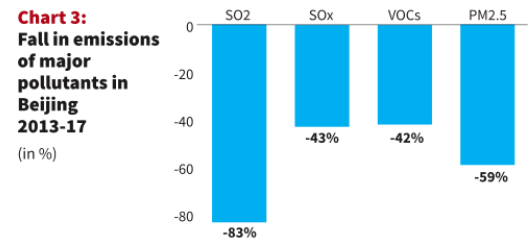
Lessons for Delhi
- Transport Improvements: Private transport is Delhi’s biggest polluter. Solutions include:
- Expanding and integrating the metro and bus systems, increasing fleet size.
- Offering subsidies for scrapping old vehicles and introducing exclusive cycling and walking lanes.
- Implementing congestion charges and differentiated fuel costs.
- Energy Overhaul: Delhi’s electricity supply largely depends on coal-fired plants. The energy system needs:
- Investment in clean energy, such as subsidizing solar rooftops and connecting them to the grid.
- Regional Cooperation: Much like Beijing’s success through regional coordination, Delhi needs to work with neighboring regions to manage cross-border pollution effectively.
- Public Awareness and Political Will: Delhi’s residents must demand their right to clean air. Holding the government accountable is crucial to solving the problem, instead of relying on private solutions like air purifiers, which are exclusionary.
Conclusion: The Need for Action
- Despite numerous ideas, Delhi struggles with a lack of political will, with both the state and central governments failing to take decisive action.
- Delhi’s air quality remains dangerously poor, especially in the winter months, and urgent steps are required to address this public health crisis.
| PYQ: Mumbai, Delhi and Kolkata are the three megacities of the country but the air pollution is a much more serious problem in Delhi as compared to the other two. Why is this so? (200 words/12.5m) (UPSC CSE (M) GS-1 2015) |
| Practice Question: Delhi’s air pollution crisis bears striking similarities to Beijing’s situation in 2013. Analyze the key strategies Beijing adopted to combat air pollution and discuss how Delhi can implement similar measures to improve its air quality. (250 Words /15 marks) |
2. Simultaneous Elections in India: Roadmap, Challenges, and Feasibility
(Source: Indian Express; Section: Cover Page; Page: 01)
| Topic: GS2 – Polity |
| Context: |
|
Analysis of News:
What are Simultaneous Elections?
- Simultaneous Elections means holding elections to the House of the People, all the State Legislative Assemblies, and local bodies i.e., Municipalities and Panchayats, together.
- It effectively means that a voter casts his vote for electing members for all tiers of the Government on a single day and at the same time.
- Currently, all these elections are held independently of one another, following timelines dictated by the terms of every individual elected body.
- It does not mean that voting across the country for Lok Sabha and State Assemblies needs to happen on a single day. This can be conducted in a phase-wise manner.
- It is popularly known as One Nation, One Election.
Historical Context and Challenges
- Simultaneous elections were disrupted between 1967 and 1971 due to unstable governments and early election announcements.
- The primary challenge lies in managing situations where governments lose majority mid-term, necessitating a roadmap for continuity.
Roadmap Suggested by the Kovind Committee
The Kovind Committee proposed a two-step process:
- Synchronizing Lok Sabha and Assembly Elections: This would require constitutional amendments but not ratification by states.
- Aligning Local Body Elections: To be held within 100 days of Lok Sabha and Assembly polls, requiring ratification by at least half the states.
The Committee also suggested provisions for midterm elections, where new governments would serve the remaining term of the dissolved House.
Constitutional Amendments Required
Key amendments would involve:
- Article 83: Duration of the Lok Sabha.
- Article 172: Duration of state Assemblies.
- Presidential notifications would facilitate transitions, but failure to pass the amendments would nullify the process. Truncated terms for several state governments during the transition phase would be unavoidable.
Implications for Governance
- While simultaneous elections aim to reduce the frequency of polls, they may not eliminate midterm elections arising from loss of majority. However, the transition could discourage frequent no-confidence motions, potentially enhancing political stability over time.
Political and Legislative Dynamics
- The success of the constitutional amendments depends on bipartisan support.
- In the Lok Sabha, the NDA has 293 MPs, falling short of the two-thirds majority required.
- The Rajya Sabha presents a similar challenge, with the NDA holding 121 seats against a 154-seat threshold. Convincing non-NDA parties will be critical for the Bill’s passage.
Election Commission’s Perspective
- The Election Commission highlighted logistical and financial challenges, estimating Rs 8,000 crore for procuring EVMs and VVPATs.
- Additional costs for warehousing, transportation, and maintenance add to the burden. Moreover, machines would need replacement every 15 years, increasing long-term expenditures.
Conclusion
- While simultaneous elections promise efficiency and reduced poll-related disruptions, their implementation involves complex constitutional, logistical, and political challenges.
- Achieving consensus across political parties and addressing financial and administrative constraints will be critical to making this vision a reality.
| What Concerns are Associated with Simultaneous Elections? |
|
Undermine Federal Spirit: National political parties may gain an advantage over regional parties, which could undermine the federal spirit. It could marginalise regional parties that rely on local issues and grassroots campaigning, whereas national parties benefit from larger resources and media influence Former Chief Election Commissioner S.Y. Quraishi criticised simultaneous elections for blurring distinctions between national and local issues, thereby weakening federalism. Electoral Feedback: Elections serve as a feedback mechanism for governments. Conducting elections only once every five years could disrupt the timely feedback loop necessary for effective governance. Premature Dissolutions: If simultaneous elections are conducted and the government loses its majority in the Lok Sabha, it raises the question of whether new elections would be required in all the states, even if the ruling party holds an absolute majority in those states. Lengthy Constitutional Amendments: Simultaneous elections would require amendments to Articles 83, 85, 172, and 174 of the Constitution, which deal with the duration and dissolution of Lok Sabha and State Legislative Assemblies. Changes would also need to be made toArticle 356, which allows for the dissolution of State assemblies under President’s rule. Voter Engagement: Regional parties rely on personal methods of voter engagement such as door-to-door campaigning, local meetings, and small rallies. In simultaneous elections, voters may be swayed by corporate media influence and large organised rallies. A study found a 77% chance that voters would vote for the same party in both elections when they are held simultaneously. |
| Practice Question: Discuss the feasibility and implications of implementing simultaneous elections in India. Highlight the constitutional, logistical, and political challenges involved, and suggest measures to address them. (250 words/15 m) |
Prelims Facts
1. Gukesh is youngest world chess champion
(Source – The Hindu, International Edition – Page No. – 1)
| Context |
|
More on the news:
- D. Gukesh, an 18-year-old from Chennai, became the youngest World Chess Champion by defeating China’s Ding Liren.
- Gukesh broke Garry Kasparov’s nearly four-decade-old record with his victory after 58 moves, achieving 7.5 points.
- The 14th game was heading for a draw until Ding’s error on the 55th move sealed Gukesh’s win.
- This was the first World Chess Championship match between two Asian players and nations, India and China.
- Gukesh is the third Asian World Chess Champion, following Viswanathan Anand and Ding Liren.
- Gukesh had a challenging start but recovered, showcasing resilience throughout the tournament.
- Gukesh’s career turning point was his stellar performance in the 2022 Chennai Chess Olympiad.

2. What is Disease X and why the world should prepare for it
(Source – The Hindu, International Edition – Page No. – 7)
| Context |
|
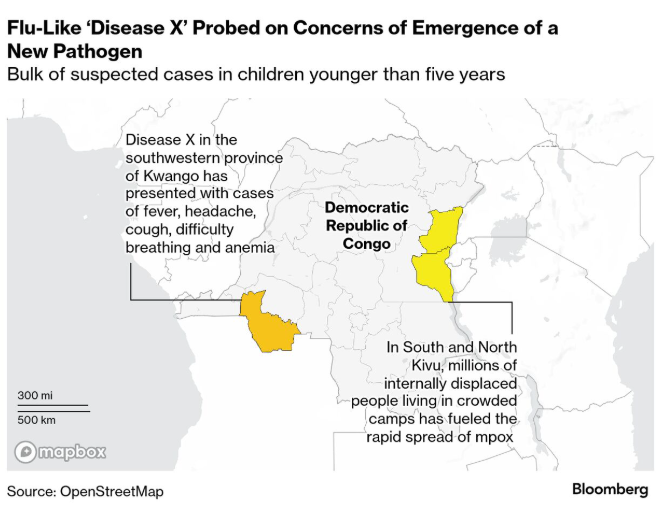
The Recent Outbreak in Congo and Concerns Over Disease X
- A December 2024 outbreak in the Democratic Republic of Congo, which has claimed over 400 lives, remains unclassified.
- It has raised fears of being an instance of Disease X, a term coined by the WHO in 2018 to describe unknown pathogens with the potential to cause pandemics.
| Understanding The Disease X |
|
WHO’s Priority Pathogens List
- Disease X was conceptualised after the 2014–2016 West African Ebola epidemic, which revealed gaps in epidemic preparedness.
- The WHO’s 2018 list of priority pathogens includes threats like Ebola, Nipah, Zika, and Disease X, focusing on diseases lacking adequate countermeasures.
- This list guides research, funding, and response efforts for potential pandemics.
Challenges and Patterns in Emerging Diseases
- Human activities like urbanisation and biodiversity loss have increased outbreaks.
- Approximately 1.7 million undiscovered wildlife viruses exist, with many capable of infecting humans.
Preparation and Global Collaboration
- Surveillance systems, genomic tools, and healthcare investments are critical for preparedness.
- Global cooperation, equitable resource sharing, and adherence to frameworks like the Nagoya Protocol are essential to counter future pandemics effectively.
3. Sweetened drinks ‘increase risk of cardiovascular diseases’
(Source – The Hindu, International Edition – Page No. – 7)
| Context |
|
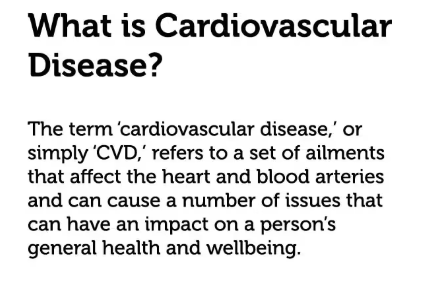
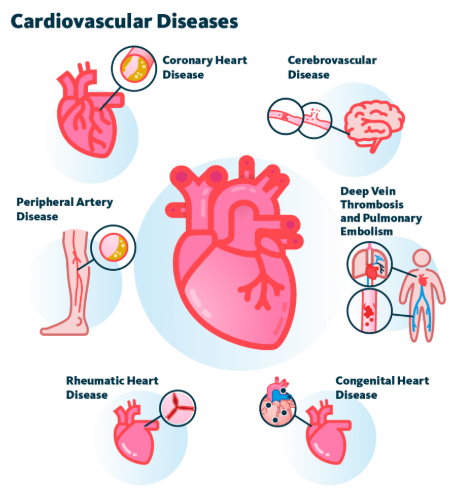
Sugar Consumption and Cardiovascular Risk
- Increased Risk from Sweetened Drinks
- Sweetened beverages are linked to higher risks of cardiovascular diseases, including stroke, heart failure, and atrial fibrillation.
- Liquid sugars reduce satiety, leading to potential overconsumption and increased health risks.
- Occasional Treats and Balanced Sugar Intake
- Occasional treats have better health outcomes than extremely low or excessive sugar intake.
- Extremely low sugar consumption is not necessarily beneficial for cardiovascular health.
- Specific Cardiovascular Risks
- High sugar intake raises risks of ischaemic stroke, abdominal aortic aneurysm, and heart failure in individuals with normal BMI.
- Excess sugar can contribute to metabolic syndrome, obesity, and systemic inflammation, accelerating cardiovascular disease.
Impact of Indian Dietary Habits
- Indian diets with high carbohydrate and sweet consumption elevate cardiovascular risks.
- Replacing sugary beverages with alternatives like herb-infused water or fresh juices is recommended.
- Excess sugar contributes to obesity, insulin resistance, and systemic inflammation, worsening heart health.
4. Pollution kills 1.5 million a year, no Indian lives in WHO standard air, says study
(Source: Indian Express; Section: Explained; Page: 17)
| Context: |
|
Analysis of News:
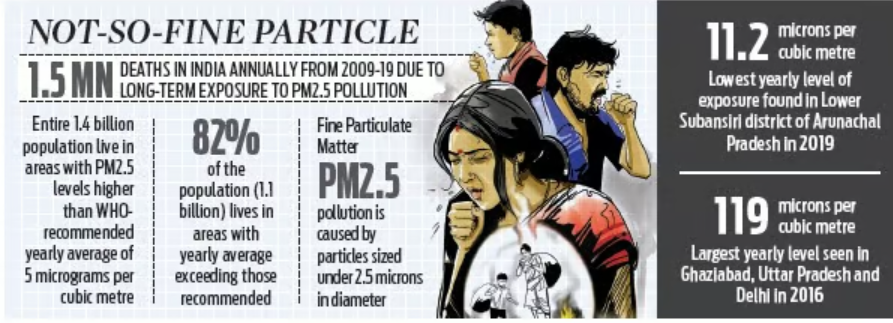
Health Impacts of PM2.5
- PM2.5 affects multiple body systems, increasing the risk of respiratory diseases, heart attacks, strokes, hypertension, and developmental delays in children.
- The study found that every 10 µg/m³ increase in PM2.5 levels raised the risk of death from any cause by 8.6%.
Geographic Disparities
- Pollution levels varied significantly across the country during the study period (2009–2019), ranging from 11.2 µg/m³ in Arunachal Pradesh’s Lower Subansiri district to a hazardous 119 µg/m³ in Ghaziabad and Delhi.
Study Methodology and Findings
- Using data from civic registration systems, ground stations, and satellites, researchers linked 25% of deaths in India—equivalent to 1.5 million annually to high PM2.5 exposure.
- This figure exceeds the 1.1 million deaths estimated by the Global Burden of Disease, attributed to population growth and refined methodologies.
Need for Proactive Measures
- The findings underscore the urgent need for targeted measures to reduce pollution.
- Strategies must address key sources such as vehicular emissions, construction dust, crop burning, and industrial pollution.
- While achieving WHO-recommended levels would drastically cut mortality, even meeting the NAAQS could prevent 0.3 million deaths annually.
5. eCOURTS MISSION MODE PROJECT
(Source – https://pib.gov.in/PressReleseDetail.aspx?PRID=2083738®=3&lang=1 )
| Context |
|
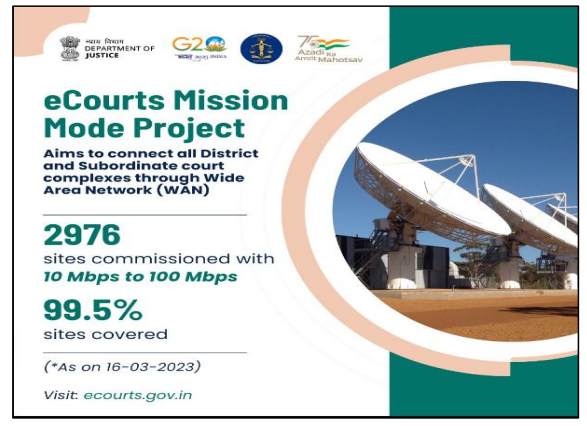
Overview of the eCourts Mission Mode Project
- The eCourts Mission Mode Project aims to integrate Information and Communication Technology (ICT) into the Indian judiciary for improved efficiency, transparency, and access to justice.
- It is implemented by the Department of Justice, Government of India, in collaboration with the eCommittee of the Supreme Court, through respective High Courts.
Phase I (2011–2015): Foundation of Computerization
- Budget and Spending: Outlay of ₹935 crore, with ₹639.41 crore utilized.
- Key Achievements:
- Computerization of 14,249 District and Subordinate courts.
- Installation of LAN in courts and provision of hardware/software.
- Distribution of laptops to judicial officers and training of officers in UBUNTU-Linux.
- Operationalization of video conferencing between 493 court complexes and 347 jails.
Phase II (2015–2023): Enhanced ICT Enablement
- Budget and Spending: Outlay of ₹1,670 crore, with ₹1,668.43 crore utilized.
- Major Initiatives:
- Connectivity to 99.5% of court complexes with high-speed WAN.
- Launch of the National Judicial Data Grid (NJDG) for case and judgment information.
- Development of Case Information Software (CIS) and platforms for real-time updates.
- Use of video conferencing for 3.38 crore hearings in courts.
- Launch of e-filing (version 3.0), virtual courts in 21 states/UTs, and ePayment systems.
- Establishment of 1,394 eSewa Kendras for citizens’ access to e-court services.
Phase III (2023–2027): Digital Transformation
- Budget and Vision: Approved outlay of ₹7,210 crore.
- Proposed Initiatives:
- Creation of digital and paperless courts and digitization of all court records.
- Expansion of video conferencing to jails and hospitals.
- Adoption of emerging technologies like AI for case analysis and forecasting.
- Saturation of court complexes with eSewa Kendras and establishment of cloud-based data repositories.
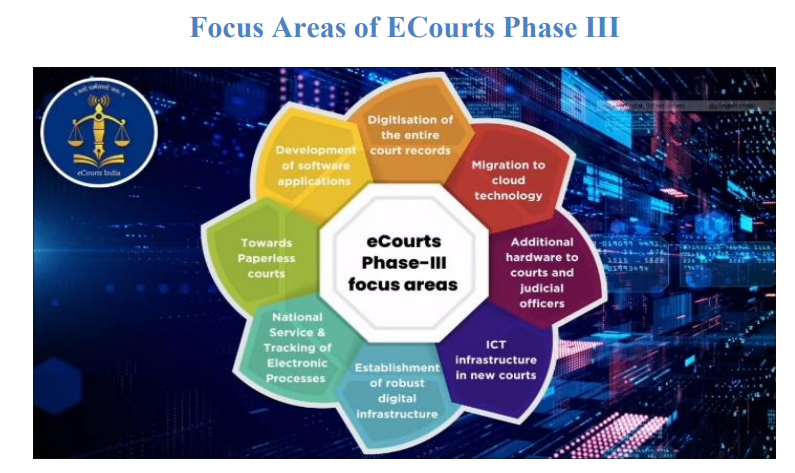
Significance
- The project aims to make justice accessible, cost-effective, and efficient, heralding a digital revolution in India’s judicial system.
| Practice Question: Discuss the significance of the eCourts Mission Mode Project in enhancing judicial efficiency and accessibility in India. Highlight the key challenges in implementation. (150 Words /10 marks) |



